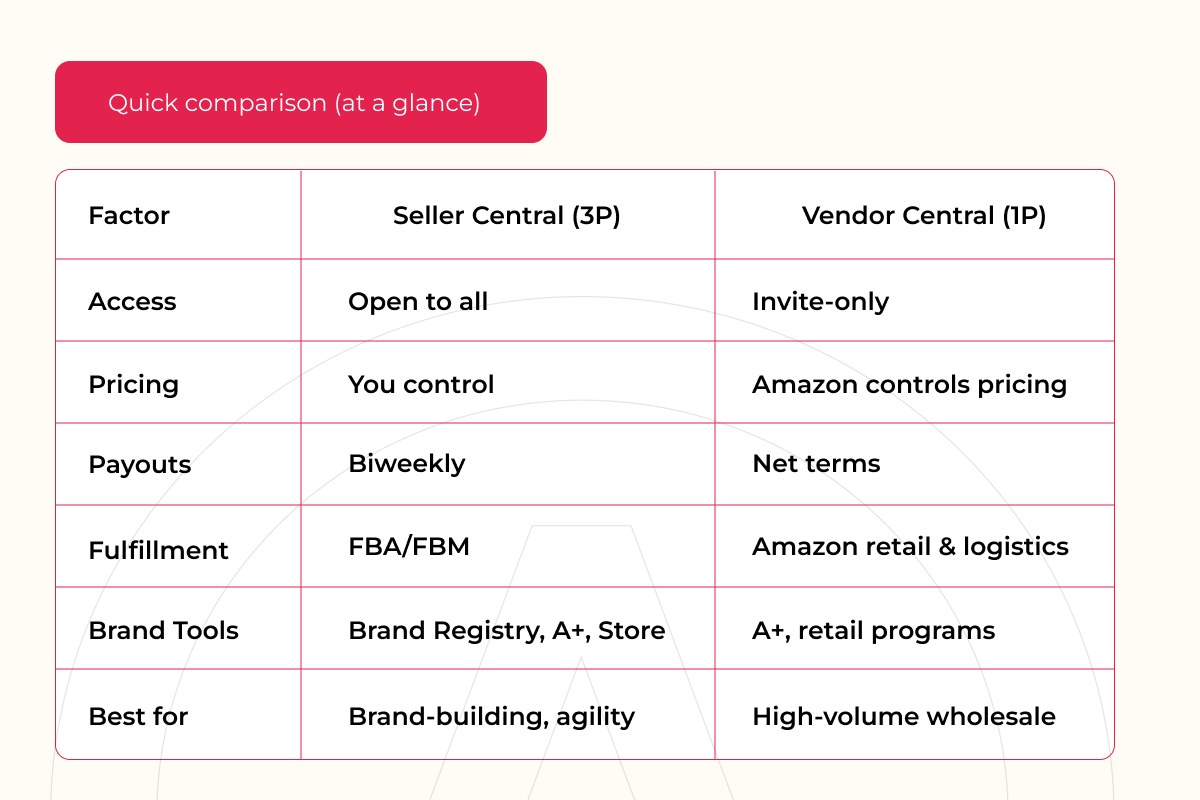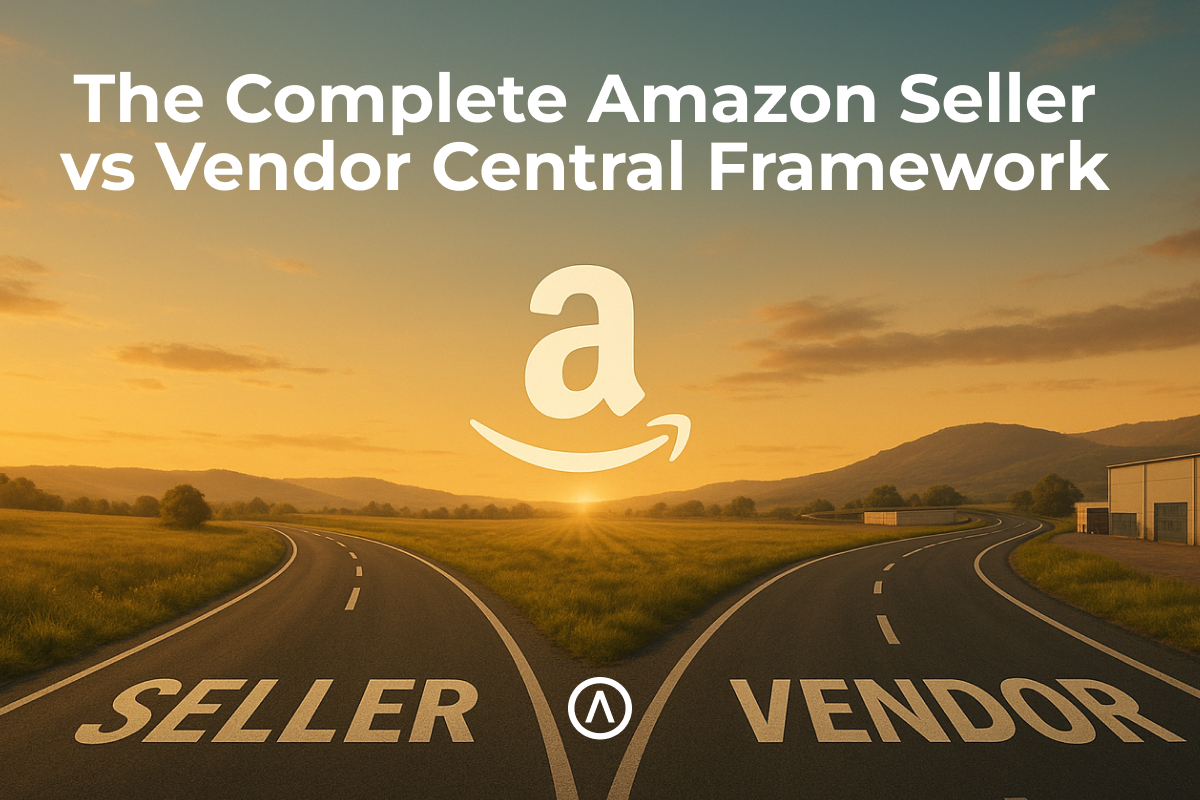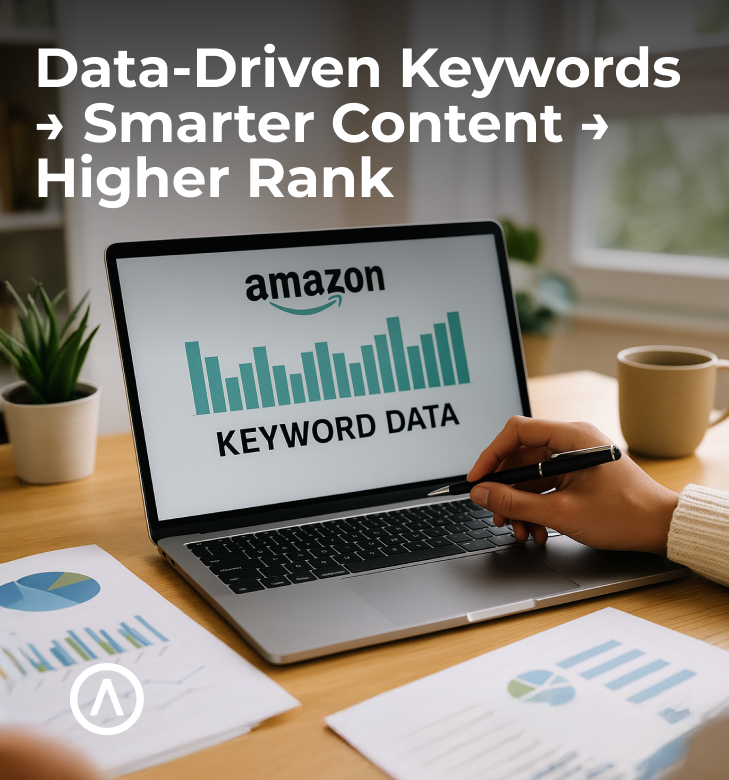Choosing between Seller Central (3P) and Vendor Central (1P) is a crucial decision that impacts everything from pricing control to payouts. In this comprehensive guide, we’ll walk you through a decision-making framework designed to help new Amazon sellers make the right choice quickly. This framework aligns with how Algofy’s 360° digital marketing services can help you maximize your brand’s success, whether you go for 3P or 1P.
Key Takeaways
- Access:
- Seller Central: Open to all sellers, no invitation needed.
- Vendor Central: By invitation only, exclusive to select sellers.
- Control:
- Seller Central: Retain full control over your product pricing and content.
- Vendor Central: Amazon takes over pricing and content decisions.
- Cash Flow:
- Seller Central: Bi-weekly payouts to maintain steady cash flow.
- Vendor Central: Payments made on net terms, with slower cash flow.
- Operational Fit:
- Seller Central: Ideal for brand-building and agile testing.
- Vendor Central: Suited for businesses with high-volume wholesale operations.
- Hybrid Model:
- Start with Seller Central (3P); consider transitioning to Vendor Central (1P) or even a hybrid model once invited and supported by your performance data.
What’s the Core Difference Between Seller Central and Vendor Central?
Seller Central (3P): As a seller, you manage your Amazon store. You control the price, product content, and fulfillment methods (FBA or FBM). This gives you greater flexibility but also the responsibility to manage all aspects of your Amazon operations.
Vendor Central (1P): In this model, you sell your products wholesale to Amazon, which becomes the retailer. Amazon sets the product pricing and handles logistics, leaving you with less control but potentially more streamlined operations for high-volume sellers.
Who Should Choose Which?
Choose Seller Central If You Need:
- Full control over product pricing and brand content.
- Faster payouts with bi-weekly payments.
- Flexibility to test, refine, and scale your brand.
- Hands-on engagement with every aspect of your Amazon store.
Choose Vendor Central If You Have:
- Large product capacity and can supply at scale.
- Comfort with Amazon handling the pricing and logistics.
- The stability to work within Amazon’s net terms for payments.
Cost & Cash Flow—What Changes in Each Model?
- Seller Central: Sellers pay Amazon referral fees and FBA costs, but enjoy the benefit of bi-weekly payouts. This allows for faster reinvestment in growth.
- Vendor Central: Vendors face wholesale discounts and potential chargebacks, and receive payments on net terms, which can delay cash flow. However, Amazon handles all retail operations.
Marketing & Content Access
Both models can take advantage of Amazon’s powerful advertising tools. You can use Sponsored Ads and A+ Content, provided you enroll in Brand Registry for Seller Central (3P).
For more information, check out:

Decision Checklist:
- Need pricing control and faster cash flow? → Start with Seller Central (3P).
- Have a large PO capacity and prefer wholesale? → Choose Vendor Central (1P).
- Not invited to Vendor? → Start with Seller Central and revisit once invited.
- Want both benefits with added complexity? → Consider a Hybrid Model (only if you can manage the added complexity of pricing/content conflicts).
Frequently Asked Questions
Can I start on Vendor Central?
Usually no. Vendor Central is invite-only, so you’ll likely need to start on Seller Central and build up until you receive an invite.
Do 3P sellers get access to A+ Content and Ads?
Yes. By enrolling in Brand Registry, you can access both A+ Content and Amazon Ads.
Will Amazon honor my MAP (Minimum Advertised Price) on 1P?
Not guaranteed. Amazon can reprice products at their discretion, which can affect your MAP.
Is the hybrid model worth it?
Only if you have the resources to manage the complexities that come with multiple pricing and content structures across Seller and Vendor Central.
What’s the fastest way to launch on Amazon?
Start with Seller Central (3P), utilize FBA, enroll in Brand Registry, leverage A+ Content, and run Amazon Ads to accelerate growth.
Final Thoughts
The decision between Seller Central and Vendor Central ultimately comes down to whether you prioritize control or scalability. Seller Central offers more control over your brand and faster cash flow, while Vendor Central is ideal for high-volume wholesalers who are comfortable with Amazon managing the retail side. For many new sellers, starting with Seller Central and expanding to a hybrid or Vendor model later offers a balanced approach that scales with your growth.
For personalized guidance on choosing the best path for your brand, contact Algofy today.









.png)
.png)












